Ever wonder what happens on campus between semesters? During interterm, Amherst College offers a diverse range of classes and workshops for students who choose to stay on campus. From creating 3D models of dinosaur tracks, to playing with dramatic stage lighting, to immersion in creative writing, to boosting verbal communication skills, the Interterm programs help make January a vibrant and illuminating time on campus.
Reframing Sustainable Eating with Your Farmers
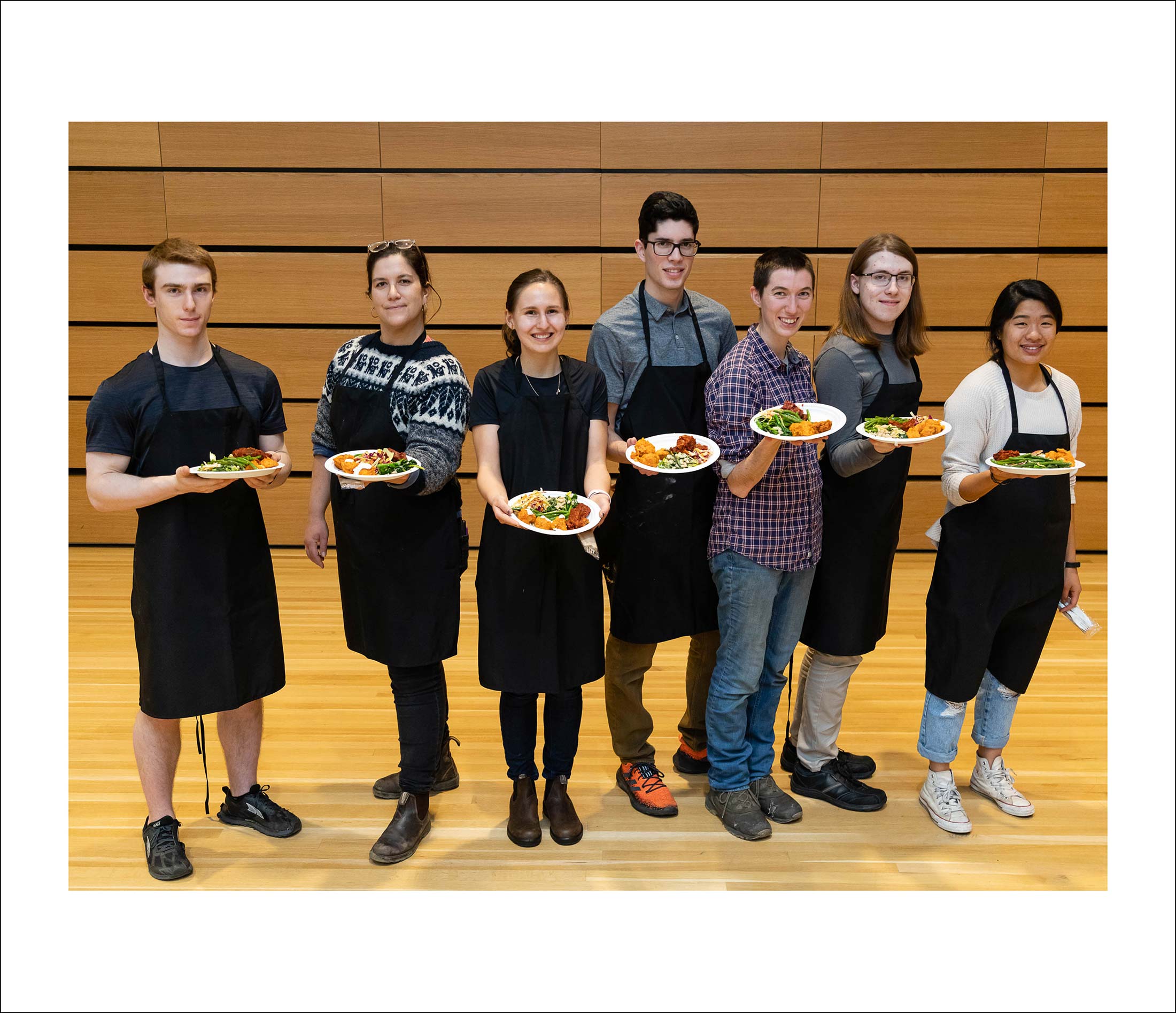
In this 2020 interterm cooking class, students learned what it means to cook and eat sustainably, exploring how the concept of eating sustainably can be different for people depending on identity and privilege.
Chefs pictured here (L to R): Ethan Spingarn ’23, Maida Ives, Sarah Gayer ’21, Jared Gracia-David ’23, Kaylee Brow, Sasha Valone ’21 and Kim Zhou ’22.

The students not only talked about sustainable cooking but also prepared and enjoyed three meals, after identifying key methods for making plant-based meals taste good and feel satisfying. This class was facilitated by Maida Ives, manager of farm education and operations, and Kaylee Brow, assistant farm manager, both of the College's Book & Plow Farm.
Intro to Photogrammetry

Facilitated by Hayley Singleton, head of collections and operations at the College's Beneski Museum of Natural History, and Tim Pinault, digitization coordinator at Frost Library, this workshop covered basic workflows and methodologies to create 3D models. Participants used DSLR cameras, Adobe Photoshop and Metashape Pro photogrammetric processing software to create accurate 3D models of historical objects.
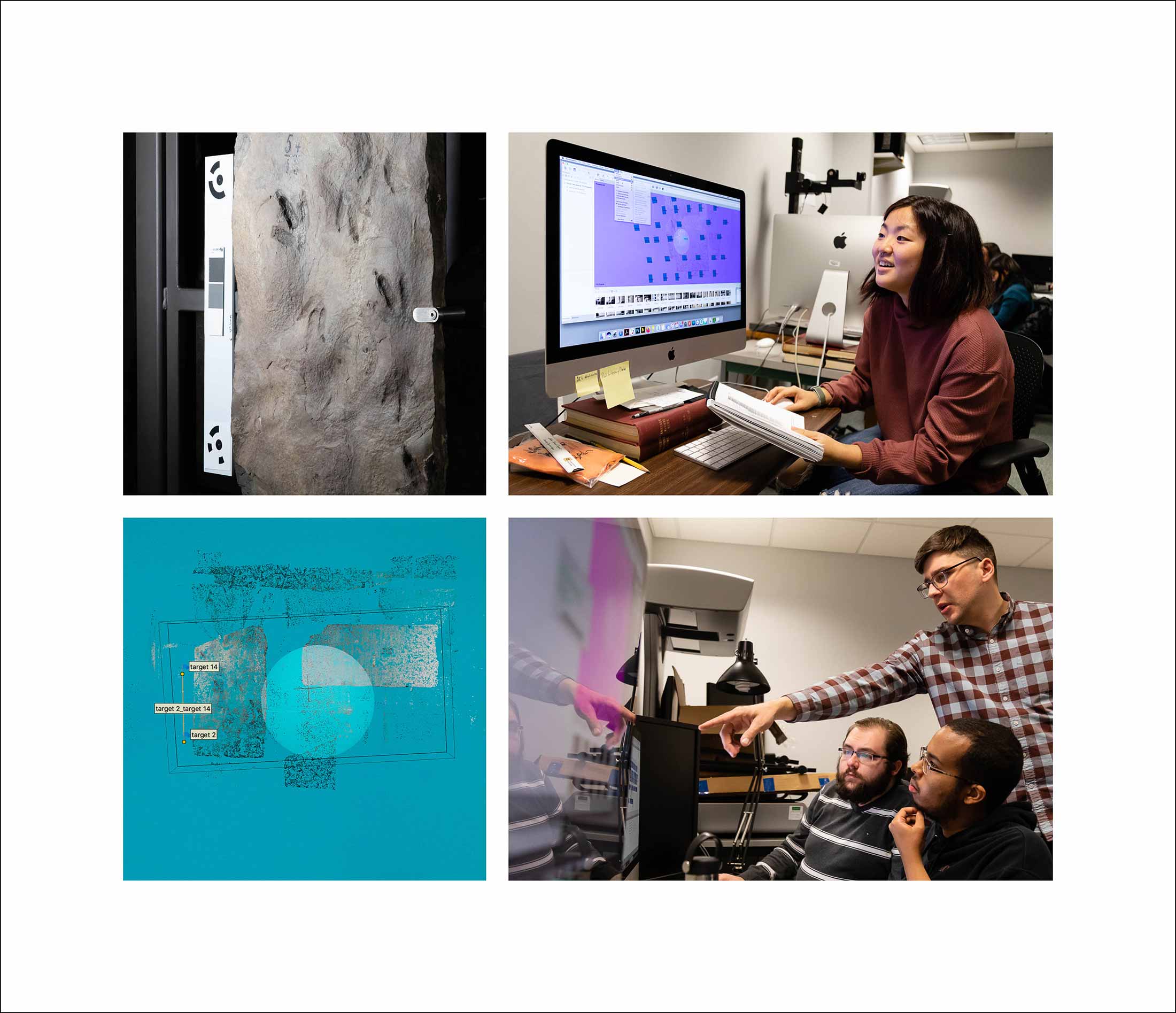
Workshop participants learned techniques that have a wide range of uses, including those related to 3D printing, gaming and the preservation of historical objects and sites. Students worked collaboratively to photograph historical objects and dinosaur tracks at the Beneski.
The Moving Light
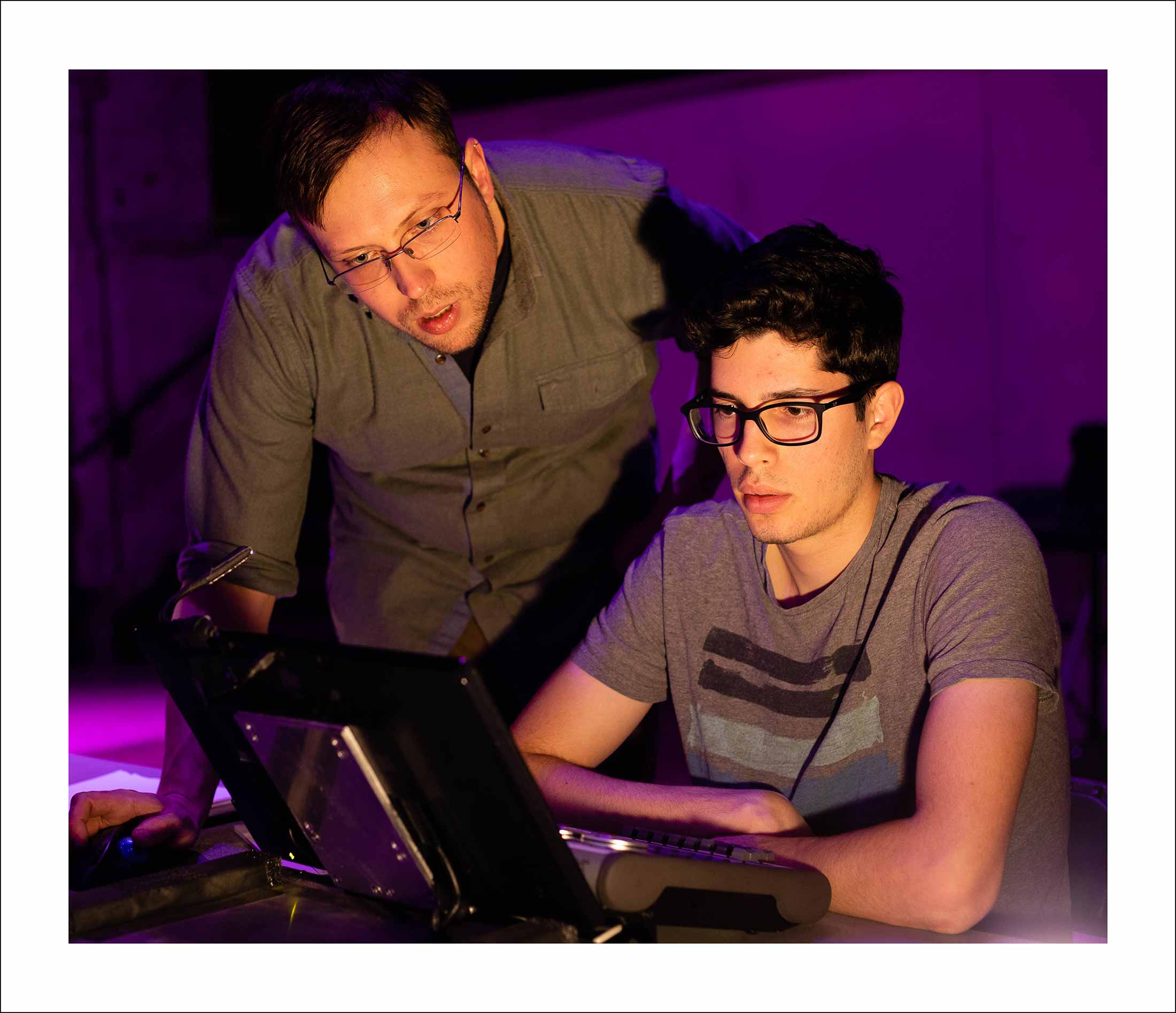
Led by lighting designer Saulius Slezas, students dove headfirst into the modern world of entertainment lighting. Using The Powerhouse’s in-house lighting package as a light lab, they worked their way through the philosophical, workflow and technical skills needed to program a lighting show on today’s computerized and networked LED-based lighting fixtures. Rather than focus on how lighting can be used in purpose-built theater spaces, the course took a broader approach and considered how lighting can be used in all live entertainment settings.
Creative Writing Residency

This two-week independent residency in creative writing, led by Writing Center associates Roy Andrews '80 and Emily Merriman, was modeled on writers’ and artists’ colonies such as MacDowell, Yaddo and the Provincetown Fine Arts Workshop. The program offered students the chance to devote sustained, undistracted attention to their own fiction, poetry, dramatic writing and creative nonfiction in a supportive environment.
Men's Swimming Team
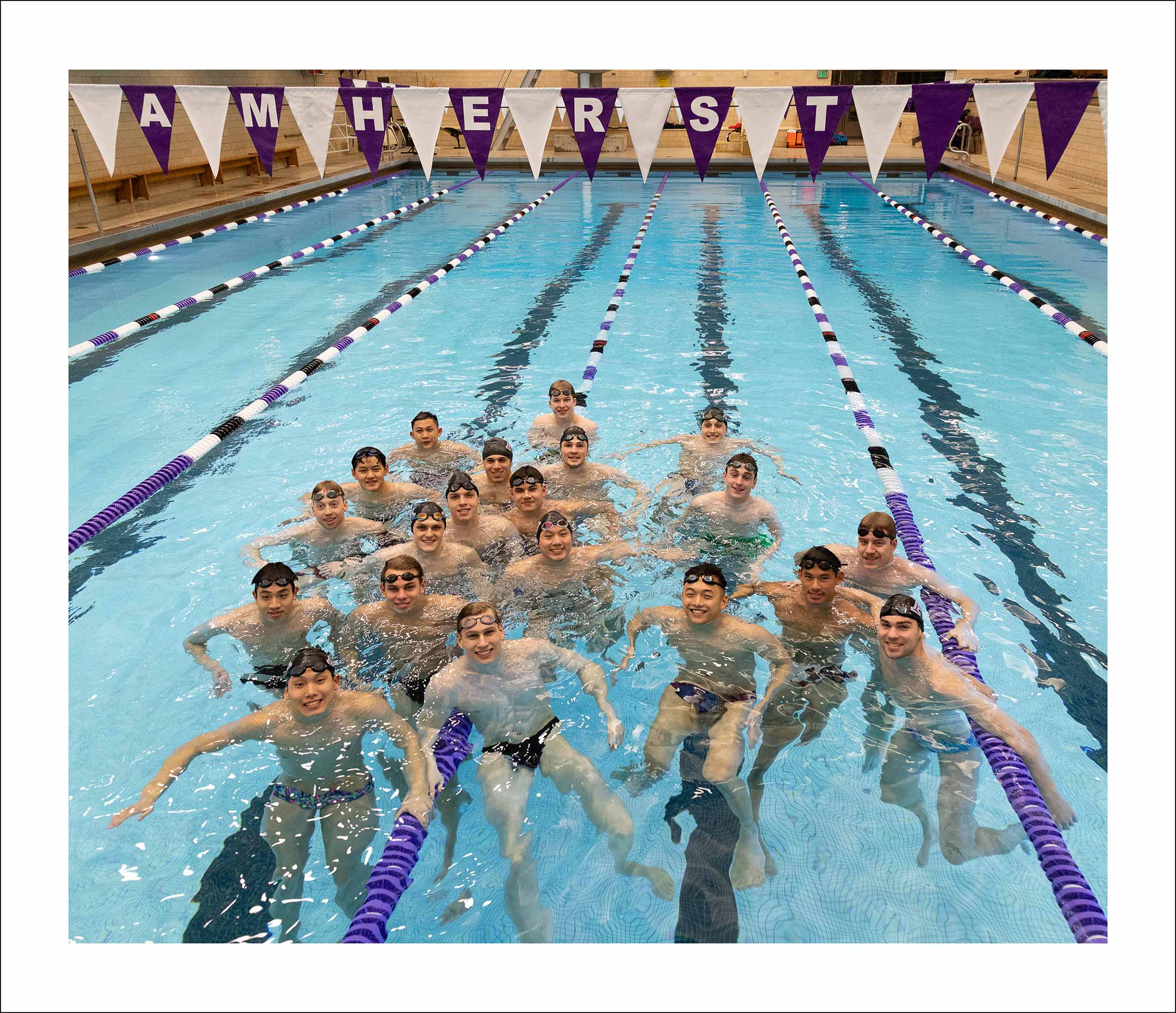
Many Amherst varsity teams are active during Interterm. This photo from Pratt Pool, for example, shows members of the men’s swim team (ranked in the top 20 in Division III) during practice for a clash against archrival Williams College.
Communicate with Confidence: A Speaking Intensive
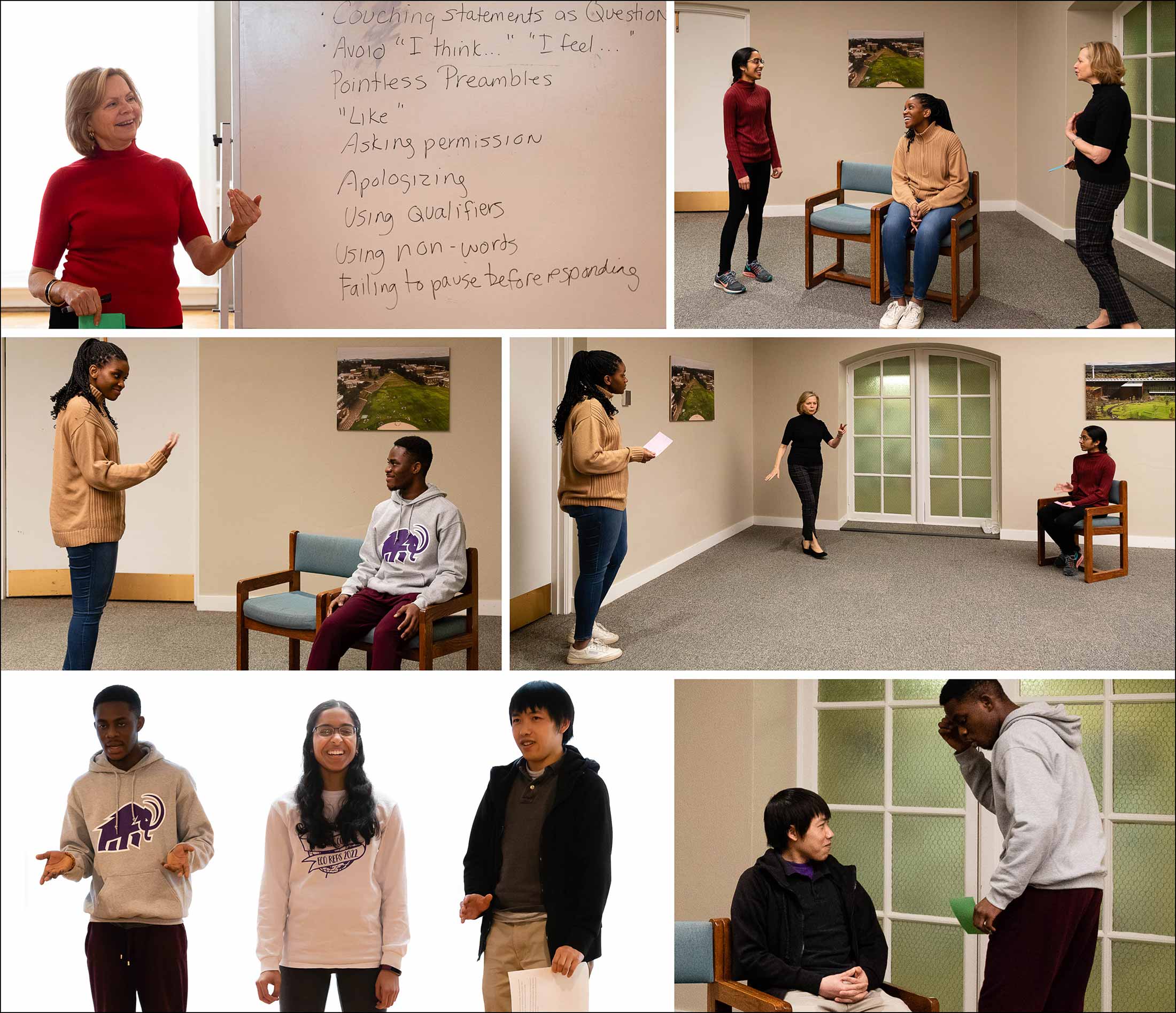
Facilitated by Susan Daniels, Amherst's associate for public speaking, this four-day intensive course taught the art of confident and powerful communication. Designed for students who might not always feel entitled to speak, because of gender or other aspects of identity, this course centered on focusing messages and connecting with an audience. Students were guided to uncover their unique strengths, develop authentic and personalized speaking styles and overcome obstacles to delivering their message by practicing techniques used by experienced actors.
Collecting 101: Acquiring Art for the Mead
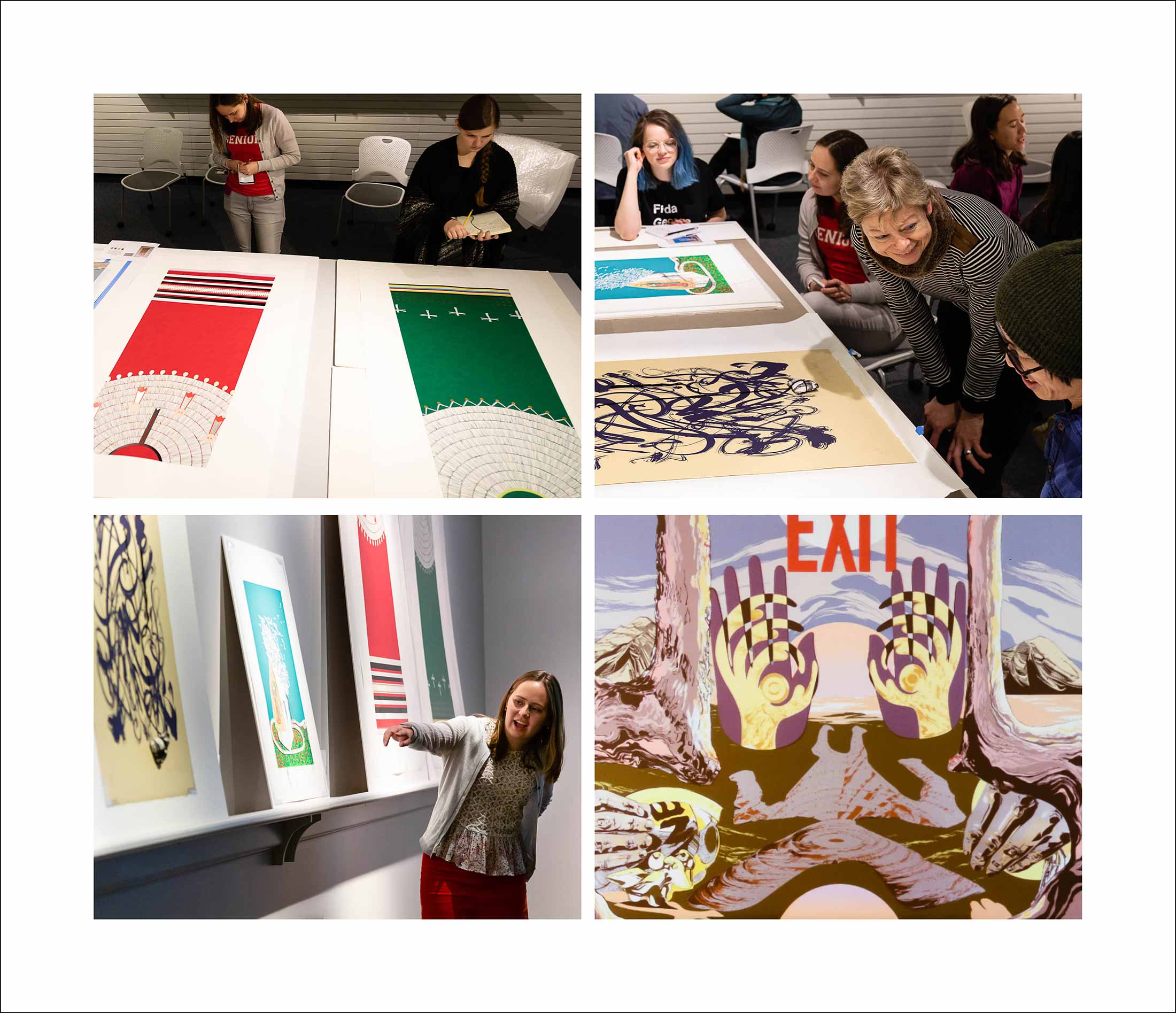
Sponsored by the Mead Art Museum and facilitated by Miloslava Hruba, study room manager and European print specialist, and Emily Potter-Ndiaye, head of education and curator of academic programs, the Collecting 101 Interterm course culminated in students choosing a piece of art to purchase for the Mead's permanent collection.
Mapping Geographic Data with ArcGIS

In sessions facilitated by Academic Technology Specialist Andy Anderson, students learned to use Geographic Information Systems (GIS), a set of powerful tools to discover spatial relationships and illuminate research with intuitive maps. They applied GIS to such projects as illustrating historic sites; displaying geologic formations; tracking human, animal and plant populations; and mapping locations from a GPS receiver.
The Career Pitch: Authentically Telling Your Story

In a workshop facilitated by Emily Tareila, assistant director for internships at the Loeb Center for Career Exploration and Planning, students built confidence in describing their goals, interests and experiences to potential employers, funding agencies and graduate school committees. They learned, for example, how to authentically answer the prompt, “So, tell me about yourself.” They also identified themes and pivotal moments in their lives, and developed a suite of examples to pull from for interviews, cover letters and more.
Not Bread Alone
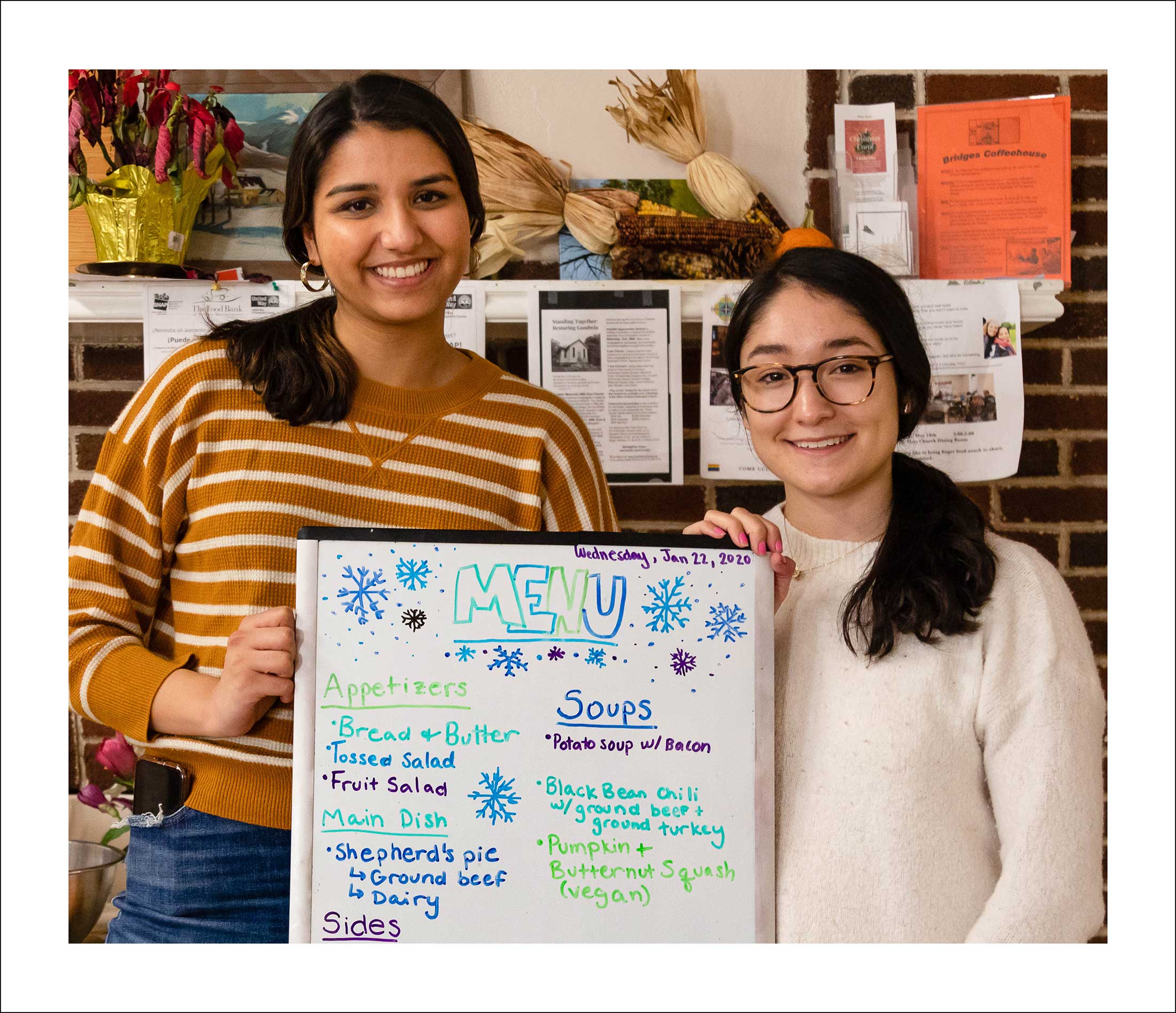

Not Bread Alone is a local program that provides three hot meals a week to those in need at the First Congregational Church of Amherst. Over interterm, Harrison Blum, director of religious and spiritual life, facilitated a group of volunteers from Amherst to prep, cook, serve and clean up after one such meal. The session included time to reflect on the religious and spiritual elements of service.
Track & Field Team
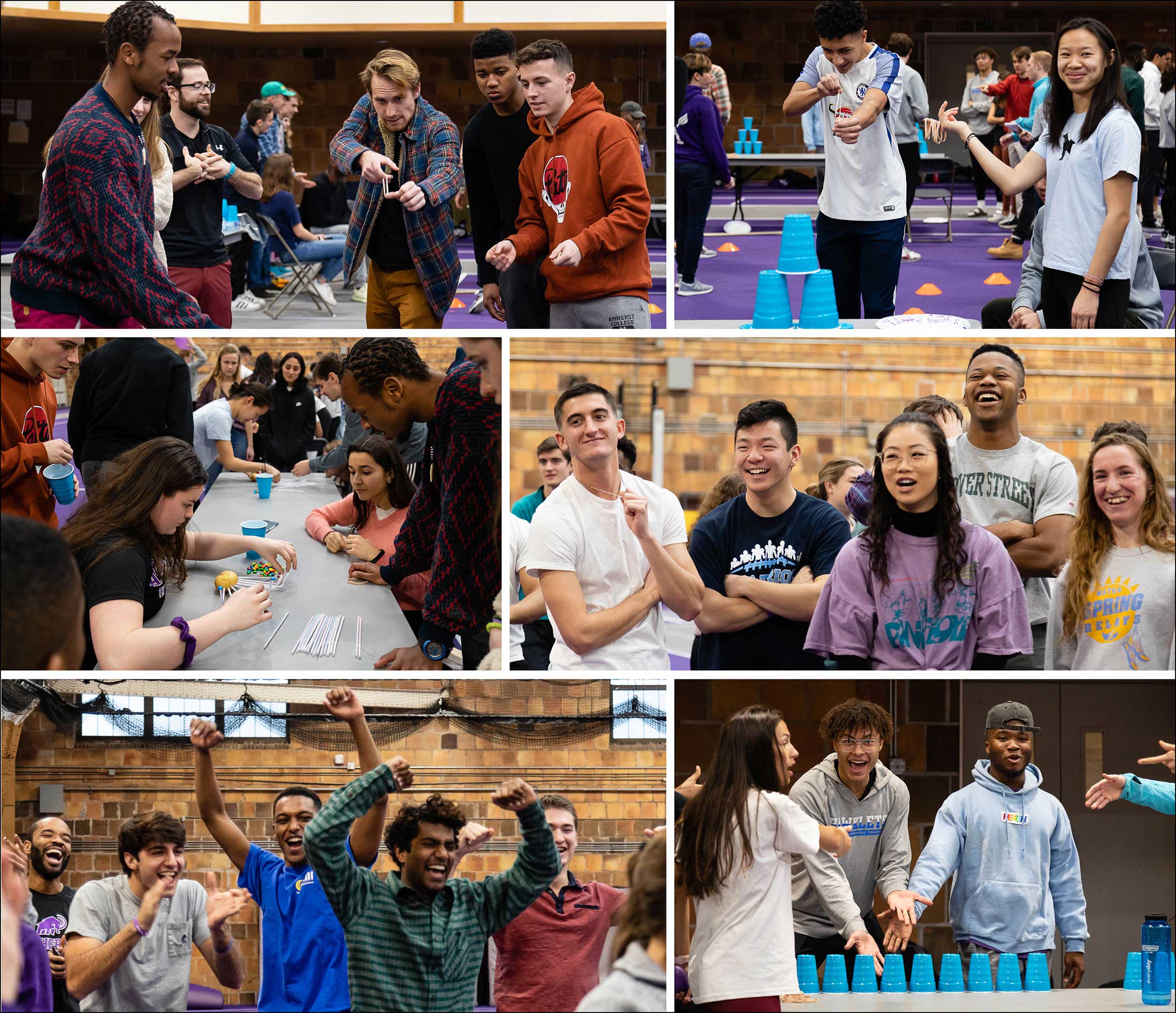
How does a team bond before its first meet of the year? Amherst track & field bonded by playing silly games—Rapid Fire, Setting Up for Lung Cup-acity, Spudnick and Bankshot. It seems to have worked! The men won the Little III Championship with a score of 138 to 136 over Williams, breaking Williams’ 31-year winning streak at this meet.

The win came down to the 4x400, the final race of the day. The men's relay, which consisted of Ben Wadsworth ’22, Ellis Phillips Galucci ’23, Matt Gelin ’23 and Ryan Prenosil ’21, sealed the victory. Prenosil was especially heroic with a 49.00-second anchor leg to win the relay by 1.2 seconds over Williams.
The Amherst women came in second behind Williams at the meet, but scored more points than they have in recent years: 116 points to Williams’ 165.
Before Farm to Table: Early Modern Foodways and Cultures

The 2020 Folger Undergraduate Fellows took part in an intensive seminar over Interterm. Students selected for this program worked collaboratively with the Folger Shakespeare Library's curator of manuscripts, Heather Wolfe '92; with postdoctoral Folger Fellows; and with Center for Humanistic Inquiry Fellow Samantha Presnal to engage in a 360-degree investigation of an 18th-century manuscript recipe book from the Folger's collection.

Students looked at how the book was put together and investigated its users, contributors and sources. They identified seasonal ingredients, preservation methods and the ingredients made available through trade routes and the institutionalized enslavement of millions of African people. They transcribed, edited and adapted recipes, uncovered implicit knowledge and hidden labor encoded in the recipes, and choose recipes to create together and share in a public presentation.